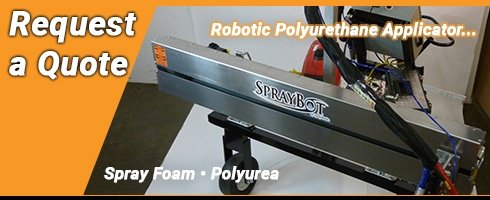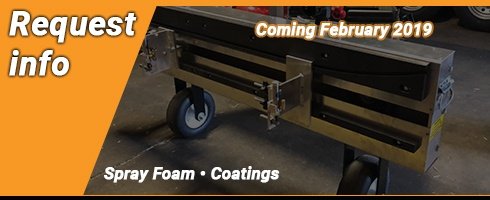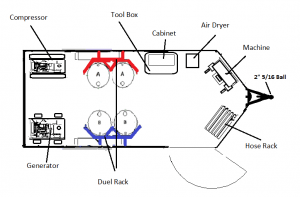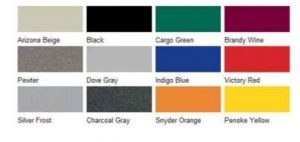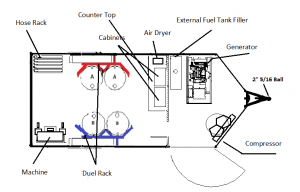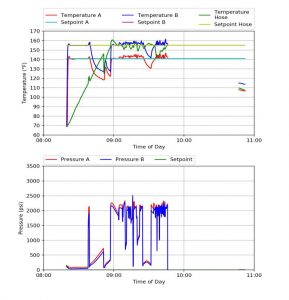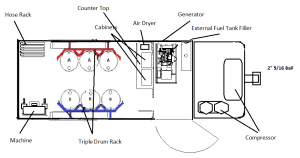It’s important to service hoses at least once per year. Periodic inspections assure the integrity of the protective wrap by repairing worn areas. Small, but mighty, the protective wrap is vital in protecting the hoses and electric lines. So, when hoses are rubbed or worn thin, bursting can happen. Also, when electric lines are exposed, shock hazards and hot spots are a real concern – resulting in poor heating performance and leading to failure, damages, and injury.
It seems tedious, but proper inspection and service of the hose requires removal of all protective coverings, inspection of each material, electrical and air line for slices or areas which have worn or the hose has pulled apart at the jacketing. If you see any corrosion in the fittings, a simple acid wash and wiping off excess areas with steel wool, will help. Make sure you wipe clean then apply a light film of rust inhibitive paint. Inspect all electrical connections and exposed wires, then repair as necessary to test for continuity. It’s vital to make sure connections are properly sealed from weather.
Lastly, perform a 15 minute working pressure test (confirm test pressures for specific hose) and then rewrap the hose accordingly. It seems like a lot of steps, but trust me, you’ll be glad you did it!

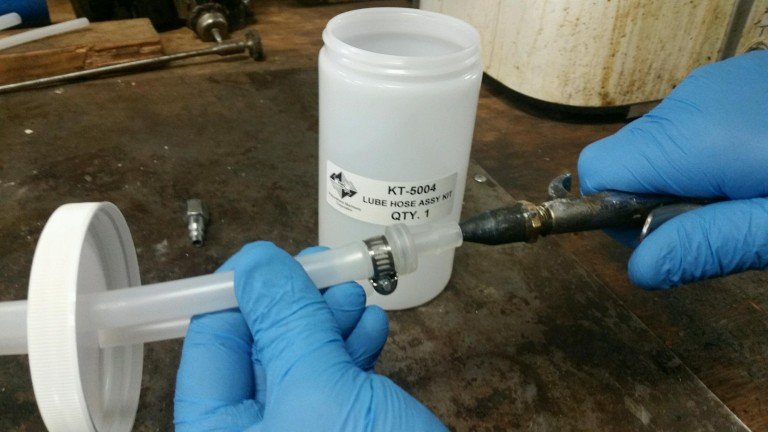 The Pump Lube Check Valve is often overlooked when performing maintenance. The check valve can be maintenanced by releasing one pound of air into the valve to ensure it is in working condition.
The Pump Lube Check Valve is often overlooked when performing maintenance. The check valve can be maintenanced by releasing one pound of air into the valve to ensure it is in working condition.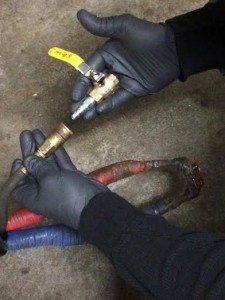 Generally, when you check equipment for moisture buildup – you’re bleeding your pressure system and tanks. However, over time, moisture sometimes builds up in your spray foam hose air line. Periodic maintenance of the air line is required.
Generally, when you check equipment for moisture buildup – you’re bleeding your pressure system and tanks. However, over time, moisture sometimes builds up in your spray foam hose air line. Periodic maintenance of the air line is required.